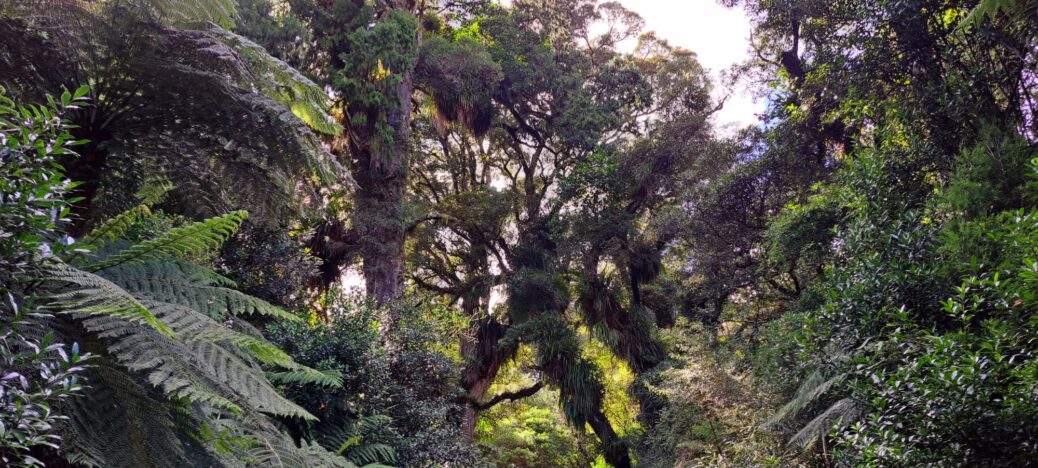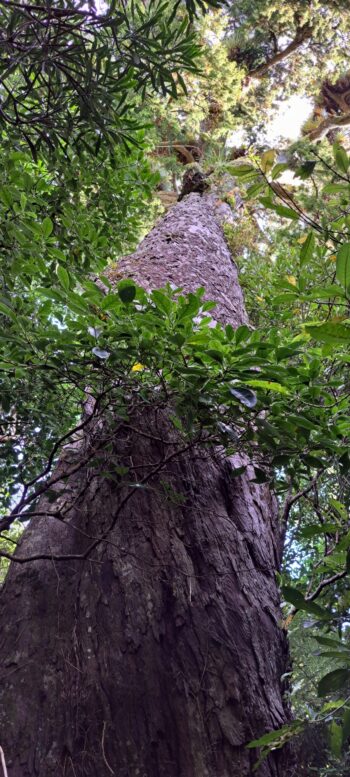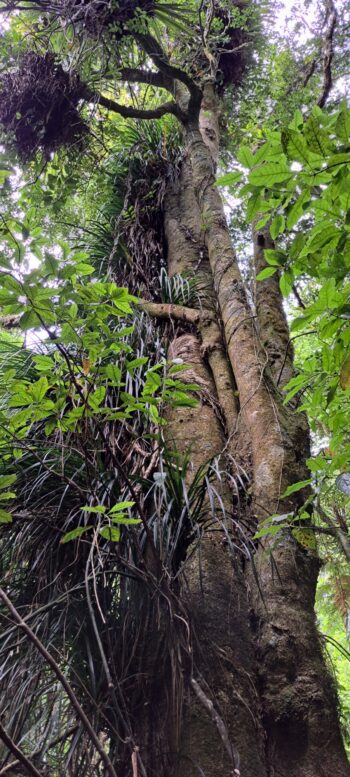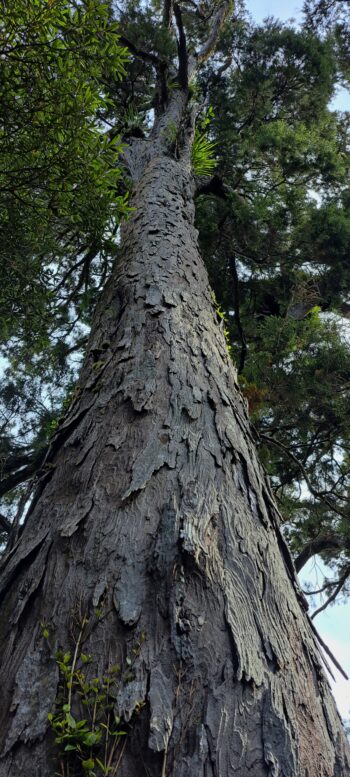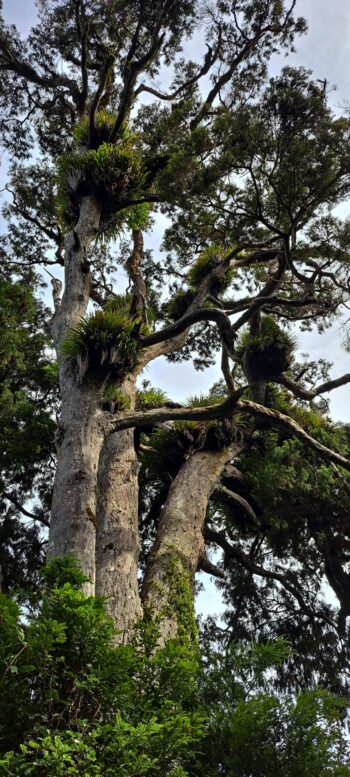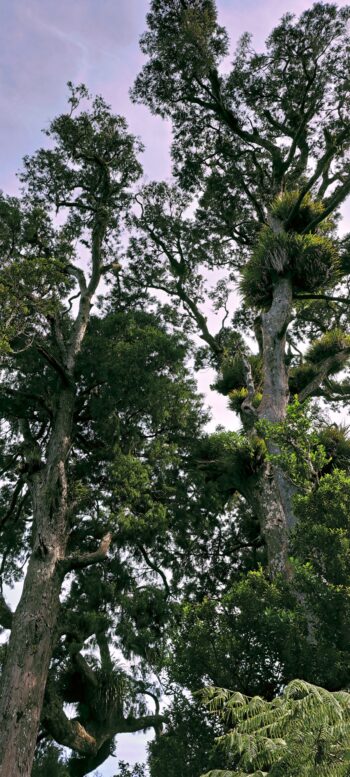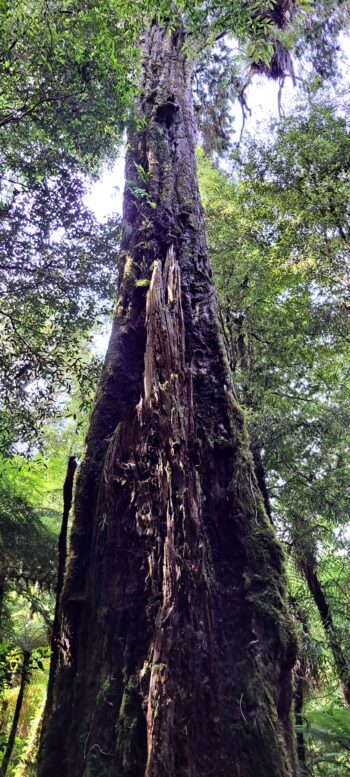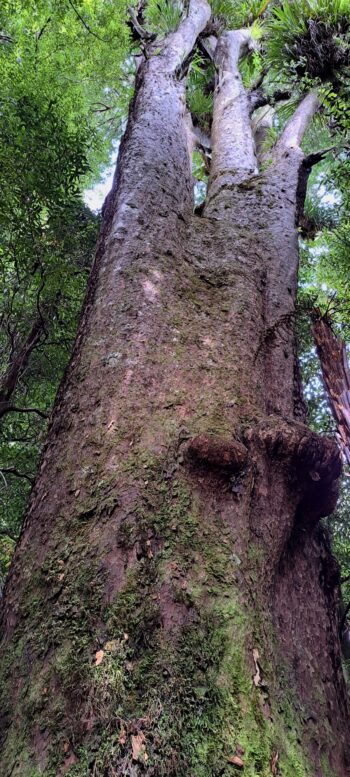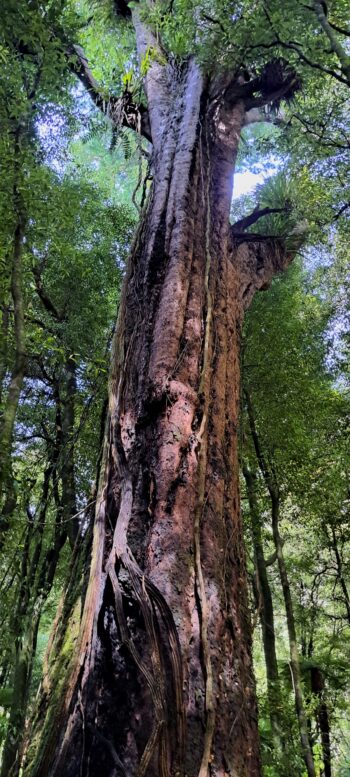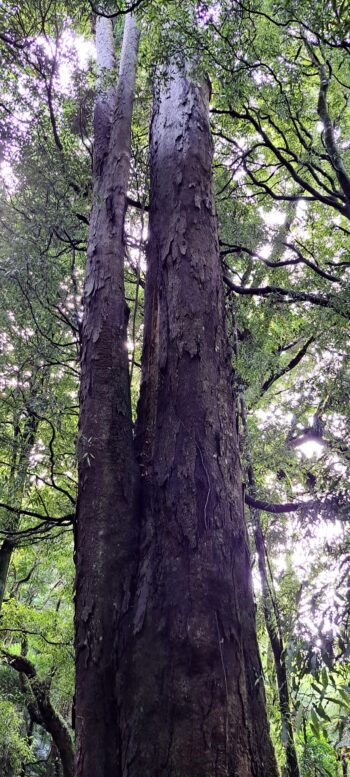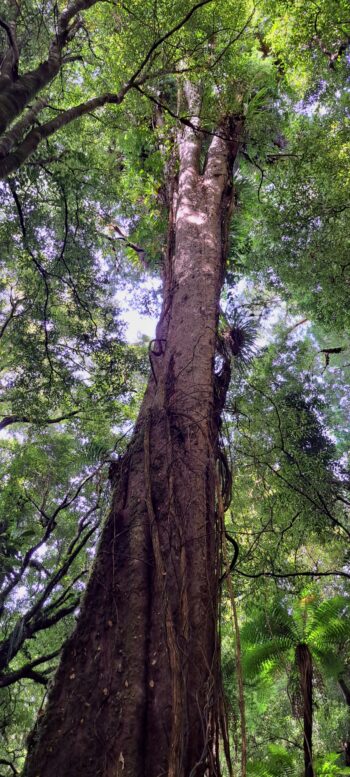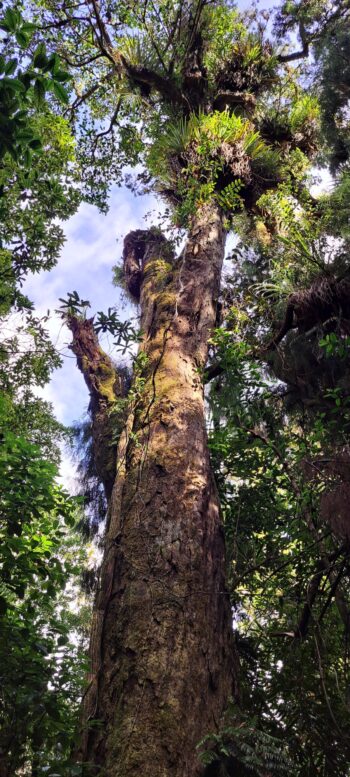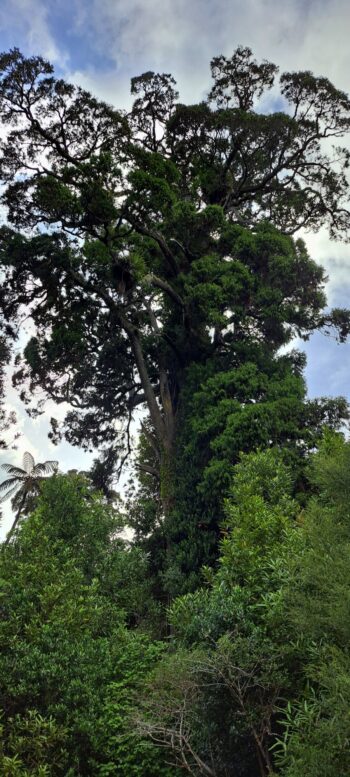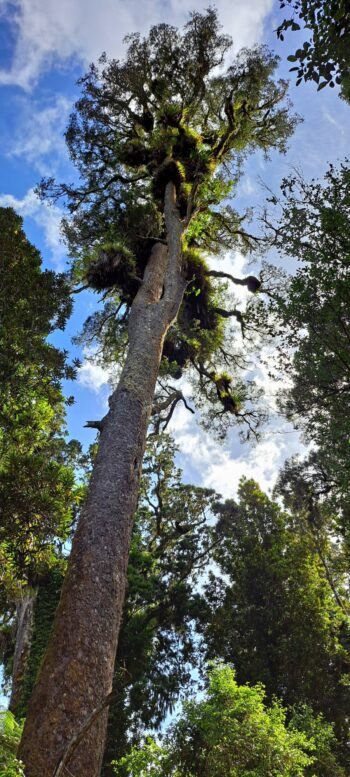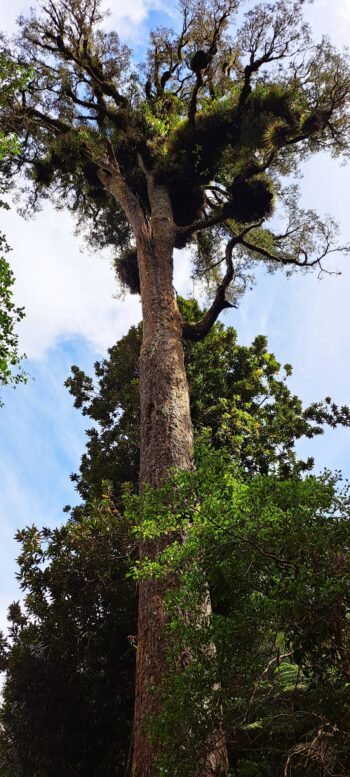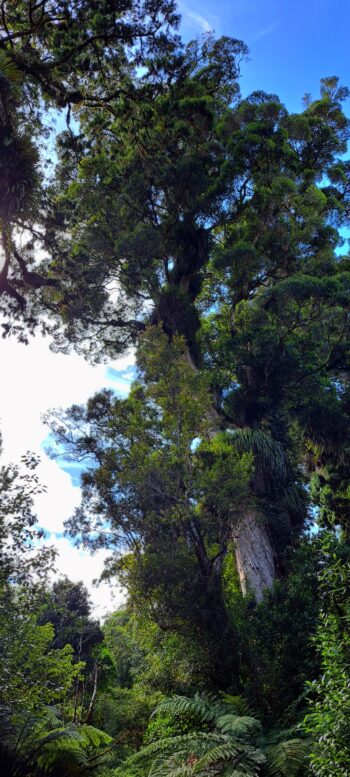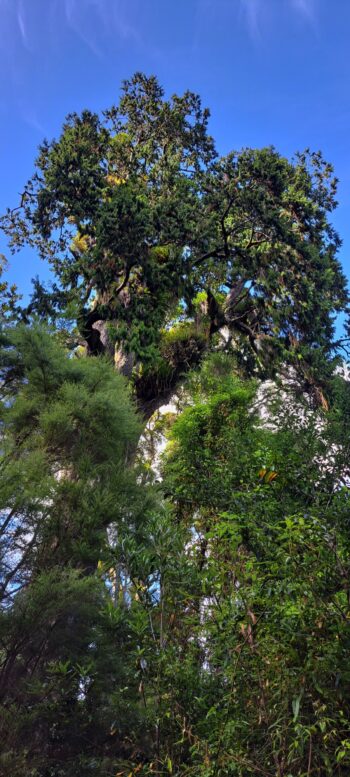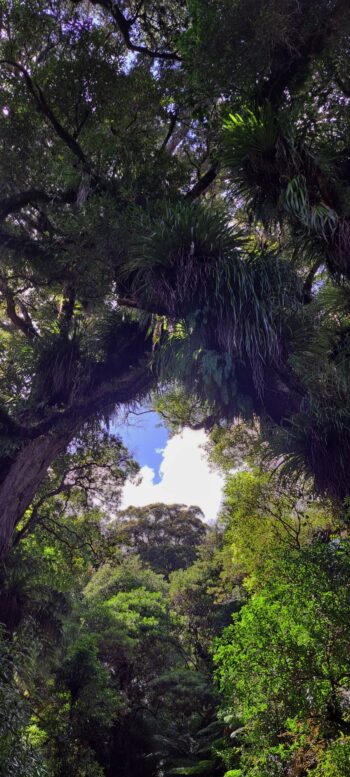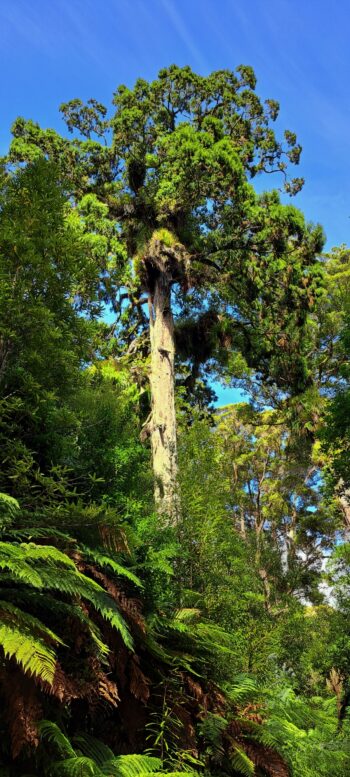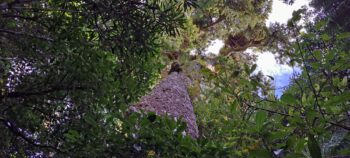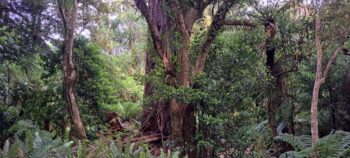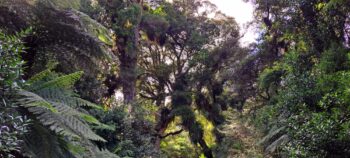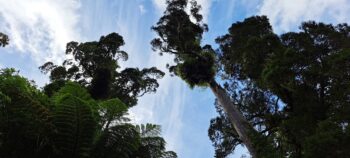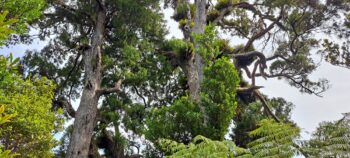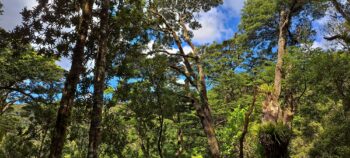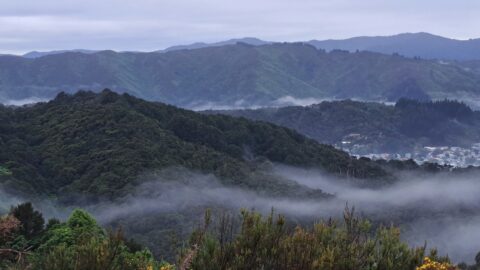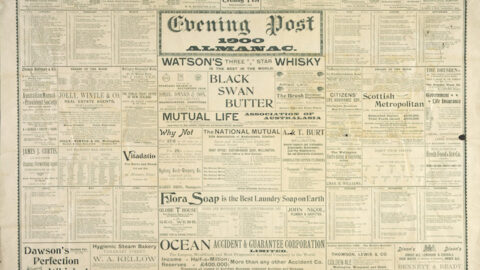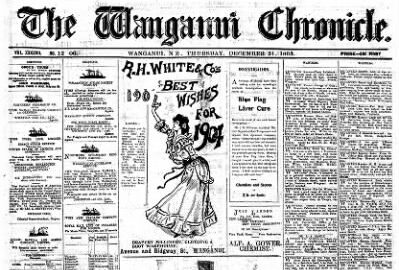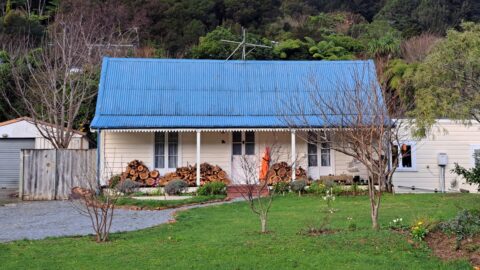Towering Podocarps: The Ancient Giants of Wainuiomata’s Forests.
Wainuiomata is home to some of the North Island’s most impressive native forests, with towering podocarps standing as ancient guardians of the landscape. These majestic trees, form the backbone of the region’s rich biodiversity, providing habitat, food, and shelter for many bird species like kererū, which help disperse seeds throughout the forest. Scattered across the surrounding valleys and ridges, these slow-growing giants embody resilience and grandeur, offering a glimpse into the ancient forests that once covered much of New Zealand.
Podocarps are ancient conifers, known for their towering height, slow growth, and valuable timber. Their value as a resource led to these forests being extensively logged during the late 1800s, leaving only scattered pockets in the lowlands and higher-altitude stands intact. Some of these surviving trees are well over 1,000 years old, standing as living relics of a once vast and untouched wilderness.
One particularly special area of lowland podocarps can be found within the Wainuiomata Water Catchment. Here, ancient trees were spared from logging to protect the purity of the region’s drinking water. This untouched forest is a rare remnant of what once covered much of the lowlands, with towering rimu, kahikatea, and other podocarps standing as living witnesses to centuries of natural history. Their preservation has not only safeguarded the water supply but also allowed the forest ecosystem to thrive.
Podocarp species found in Wainuiomata include:
Rimu (Dacrydium cupressinum)
Rimu is one of the tallest podocarps, often reaching heights of over 50 metres. It has drooping branchlets and distinctive flaky bark. The red, fleshy seeds of rimu are a favourite food of kererū. In the past, its durable timber was highly valued for construction and furniture making.
Miro (Prumnopitys ferruginea)
Miro is a medium-sized podocarp that grows up to 25 metres tall. It has small, dark green leaves and produces bright red berries that are a key food source for native birds. Its hard timber was historically used for flooring and boat building.
Mataī (Prumnopitys taxifolia)
Mataī, also known as black pine, grows up to 30 metres tall and is recognised by its dark, furrowed bark and small needle-like leaves. It produces dark purple fruit that birds such as kererū feed on. The wood of mataī is exceptionally hard and was once widely used for flooring and railway sleepers.
Tōtara (Podocarpus totara)
Tōtara is a distinctive podocarp with thick, furrowed bark and sharp, needle-like leaves. It can grow up to 35 metres tall and is highly valued for its strong, durable timber, which was traditionally used by Māori for carving waka (canoes) and whare (houses). The seeds are eaten by birds, aiding in their dispersal.
Kahikatea (Dacrycarpus dacrydioides)
Kahikatea is New Zealand’s tallest native tree, often exceeding 60 metres in height. It thrives in wetter areas and has a straight trunk with buttressed roots. Its small, orange-red fruit is a favourite of native birds. Historically, kahikatea wood was used for butter and cheese boxes due to its resistance to tainting food.

